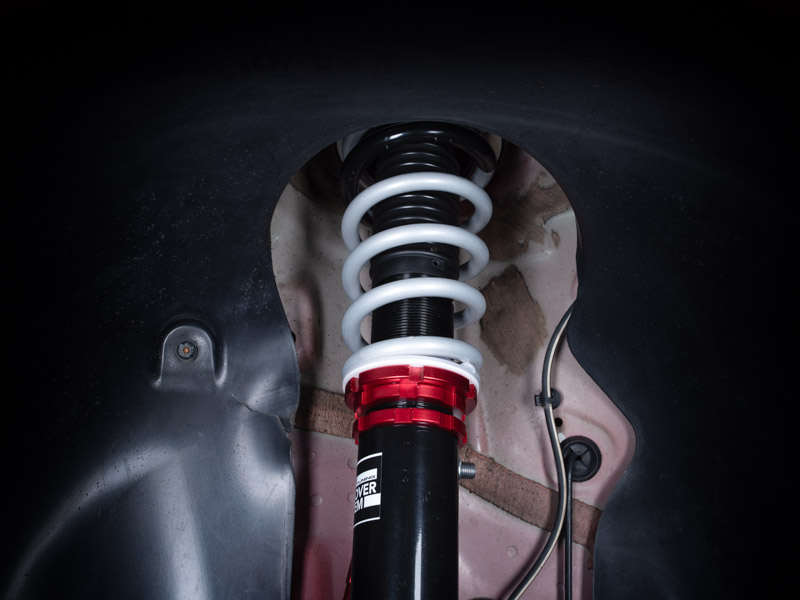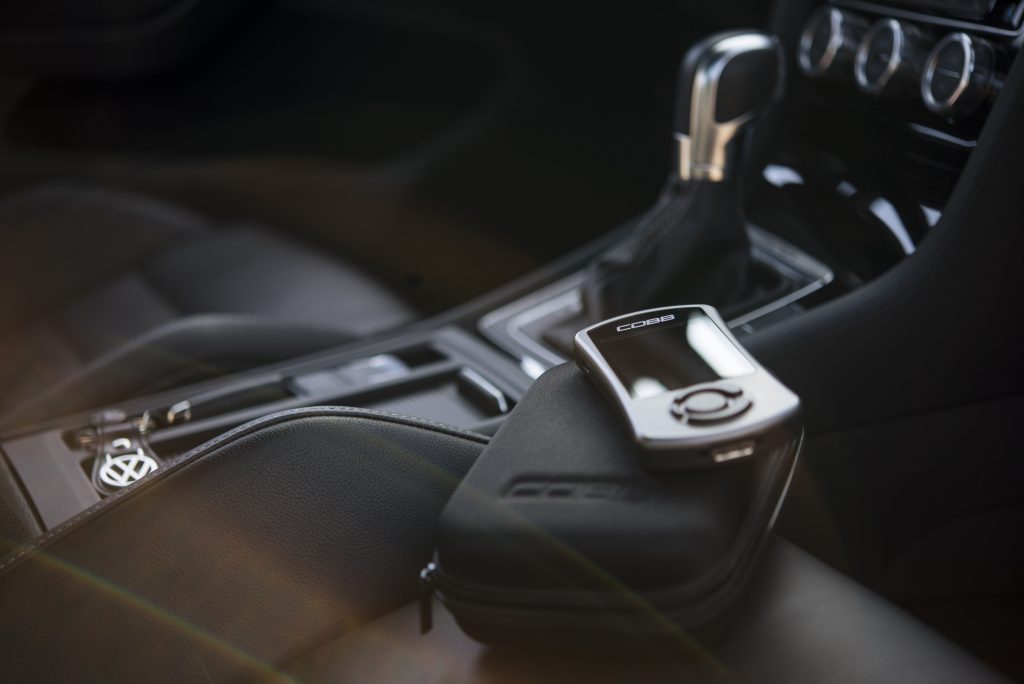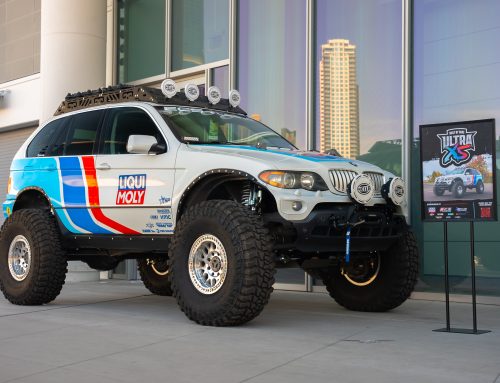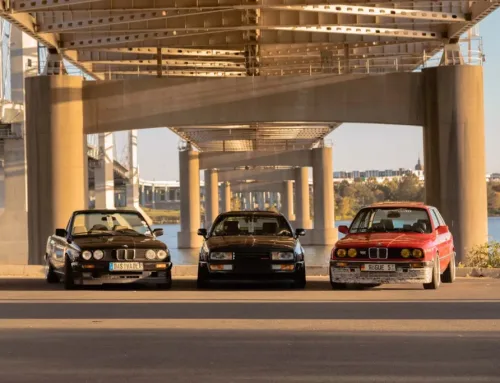Modifying cars is more than just our hobby, it’s our lifestyle. It is a form of expression we use to show our passion and enthusiasm, for the path we have chosen in life. The problem is, this form of art is more involved than just learning how to put ink on paper. It combines mechanical knowledge, geometry, measurements, personality, finances, research, and a big picture mentality into one outlet. You need to know all of those things well in order to execute a plan for your vehicle. If you’re just wading into this world, the amount of compounding skills you don’t yet have can seem daunting. So where do you start? How do you choose the right parts in the right order to create something unique to you that is within your abilities and can teach you about your hobby? We’re here to help you do just that. These are ECS Tuning’s recommendations for giving your car a well-rounded starting point that will help you learn the skills you need to create something completely yours.
First, it’s important that you understand what you are beginning. You are starting a process that can be one of the most rewarding and gratifying experiences, but only if you do it right. You need to create a plan of attack. With anything, research is key. Take the time to see what others have done with your car and break it down to basics. Likely, it’s a few key elements with a sprinkling of individuality. The biggest changes will come from a fairly cookie-cutter formula, while the smaller ones will tie your build together in a way that is unique to you.
You’ll find that the basic approach is suspension, wheels, tires, exhaust, aero, and some visual improvements. That’s pretty much it, simplified. Keep in mind, however, what your car will be used for. If this is your first car, your only car, or the car you use for every day driving, the best thing you can do is modify it in a way that allows you to retain functionality while also improving your driving and ownership experience. That’s what we’re going to cover today.
Suspension

The first thing you should do to any car for the most noticeable differences is to improve the suspension. With a lowered car, even a completely stock one, you can feel a real difference in handling and see a dramatic improvement in your car’s looks with it lowered. But what’s the best way to go about this?
In our opinion, for a daily-driven car, coilovers are your best bet. There are a few ways to lower your car, but with coilovers, you have the widest range of options and the most control over how your car looks, handles, and maintains its reliability.
Coilovers offer a spectrum of adjustment abilities as well as costs, which we cover in our article about the best coilovers on a budget. That means you can find a set that fits into your overall budget and gives you the adjustments you need for your plan. If you just want to go lower and don’t need to change damping force, camber, caster, or spring preload, a basic set is going to give you the ride height and feel you need. Remember, keep your total budget in mind. Don’t blow your whole mod budget on the most expensive coilovers if you don’t need all the features they offer. Find something that works for you and your needs. However, don’t just go for the cheapest option you found from a company that you’ve never heard of. Do your research. Our coilover guide is there to help you find that sweet spot for your build.

Wheels

With some of the money you saved on buying the right coilovers for your needs and budget, pick up a set of wheels. While coilovers are both a visual and performance upgrade, wheels are more in the visual department, but that’s ok. Remember, this is likely the car you drive every day, so sticking to the basics is more than reasonable. You’ll still be able to express yourself.
A proper set of wheels for your car after setting your ride height is both incredibly exciting and one of the biggest differences that will set your car apart from anyone else’s. Of course, there are almost infinite wheel options out there. It’s going to come down to your preferences. Check out our article on finding the best wheels to fit your budget for some ideas.
What’s most important is that whatever wheel you choose fits your car. Not just ‘will bolt up,’ but has proper fitment. That means the width, diameter, and offset are appropriate for your car. If you don’t want to do a bunch of modifications to your fenders, you’ll need to do some research to find out what wheels will fit, especially at a lowered ride height, for that flush fitment without pulling your fenders. In this case, it is important to research, measure, research again, and measure again before buying. You’ll also need to think about tires at the same time, which we’re going to cover next.

Tires

When buying your wheels, you’ll need to account for the tires as well. If you want a beefy fitment, you’ll need to make sure the wheel/tire combo will clear. If you want to stretch some skinny tires over wide wheels, you’ll need to know what works and what doesn’t. Wheel and tire calculators are common online, as are sources that show how your car on the exact wheel specs and tire size will look. Make sure you spend a good deal of time checking out those sources and reading about what owners had to do for the fitment you want to achieve.
Tires are also one of the biggest overall improvements you can make to your car’s performance. Whether it’s at an AutoX event or just ripping around a back road, tires are what keeps your car on the pavement and transfers all the power from your engine to the ground. It’s critical that you choose something that will offer that benefit of handling. Don’t just choose the cheapest options available. Pick something with the tread wear rating and grip you need to actually enjoy driving your car. Plus, if you skimp out here and buy from a company with an unpronounceable name for pennies a tire, you’re going to run the risk of potentially damaging those nice wheels and suspension you just installed in the event of a blowout. Skimping out on tires will negate all of the upgrades you’ve made thus far. Just do the right thing and buy a good performance tire that is designed to work with your needs.
Intake

Remember how we talked about planning and execution? This is one of those modifications that won’t offer much in terms of an immediate improvement but is required as you begin to throw more bolt-on performance upgrades at your engine later on if you continue upgrading your car. A true cold-air intake that separates your air filter from the rest of the engine bay to reduce intake temperatures offers a measurable performance increase as well as a cleaner look under the hood. In modern cars, there isn’t much to see thanks to all the engine covers and tightly-packed components. With a quality intake, you can keep a clean look in the engine bay while adding some performance and induction sounds. Though, it’s important you don’t just buy the cheapest ‘short ram’ intake you can find. Those do nothing. Buy something quality. If you are trying to decide what fits your financial situation, we have an article for the best intake options on a budget to help you out.
Integrated Engineering Intakes
Exhaust

After your car has the look and feel that you want from a lowered ride height, proper fitment, capable tires, and a hearty induction noise, you’ll want to hear your engine when you’re out enjoying a spirited drive. Exhaust is an incredibly rewarding upgrade and one that even a novice can make. Off the shelf options, like what we outlined in our exhaust upgrades article, meaning you can remove your old, quiet, factory exhaust and directly swap in a unit designed to sound and perform the way you want.
However, it is often tempting to opt for a ‘cheaper’ option when we see the sticker price of many exhaust systems. Don’t just go grab the sawzall and hack off your mufflers. Buy something that is designed to look and sound excellent while also offering a real performance benefit in terms of scavenging and exhaust gas velocity. You want to make your car look well-executed, right? Do it with an exhaust that has been designed to do just that. You can thank us later on the first cold start after you install it.

Software

Another upgrade you will notice but never see, software tuning is what ties your performance upgrades, now or in the future, together. A real tune or piggyback module will maximize the effect of any performance improvements, like exhaust, intake, intercooler, and turbo upgrades by remapping the computer to allow for the engine to operate efficiently with those parts. Even with basic modifications, like an intake and exhaust, you can pick up a noticeable amount of power. Some modules, like COBB Accessports, also double as digital gauge readouts for vehicle systems, offer data logging, and code reading, which makes it a well-rounded purchase. Software upgrades are right at home on the list of first upgrades to create a balanced and enjoyable build for your daily driver.
Integrated Engineering Software
Aero/Visual Upgrades

After you’ve improved the handling, performance, and appearance with the upgrades in this list, you can branch out and make those final subtle changes that will help accentuate your car’s overall character. Visual upgrades, like front lip spoilers, side skirts, rear diffusers, and rear spoilers, help tell the story of your car. Since upgrades like tires, software tunes, and, to an extent, your suspension go relatively unnoticed, the best way to express your interest and let others know there is more than just a set of wheels on your car is by slightly changing the exterior appearance for a more aggressive look and style.
Visual upgrades on daily driven cars are best executed with subtle confidence. You don’t need to put a park bench wing and canards all over your car or replace every body panel with carbon fiber. That will just end up ruining your wallet, especially if you damage something in a fender bender or have an unexpected door ding from a trip to the grocery store. Keep it simple. A front lip, not even a carbon fiber one, can distinguish your car without being overly flashy or inconvenient. A rear diffuser gives the rear of your car a busier and more motorsport-inspired look. Side skirts help fill out the middle section of your car and work well with aggressive fitment to bulk up your stance and presence. You don’t need much to stand out.

Maxton Design Exterior Upgrades
Turner Motorsport Exterior Upgrades
APR Performance Exterior Upgrades
Wrapping Up
This list is the best approach for taking your car from completely stock to respectably built. It covers some horsepower improvements, handling upgrades, software tunes, and the visual upgrades to tie it all together. With this well-rounded list, you have the information to make the first upgrades to your car and do it right. It’s all about execution. Plan for the costs, build a wish list, keep an eye on sales, and maximize your upgrades with the most sensible investments. I know it’s tempting to buy the fanciest carbon fiber hood on the market that costs as much as you have in your checking account, but a carbon hood on a completely stock car just looks tacky. By approaching your build with all aspects in mind, performance, handling, feel, and appearance, you can paint a complete picture that says ‘I’m an enthusiast who did my research and executed well on my first try.’ It’s ok to be a novice, everyone is at some point, but you can be a novice with a respectable setup or one that looks like they didn’t have someone to help guide them. Be the respectable, well-read, and confident enthusiast with help from your friends at ECS.






